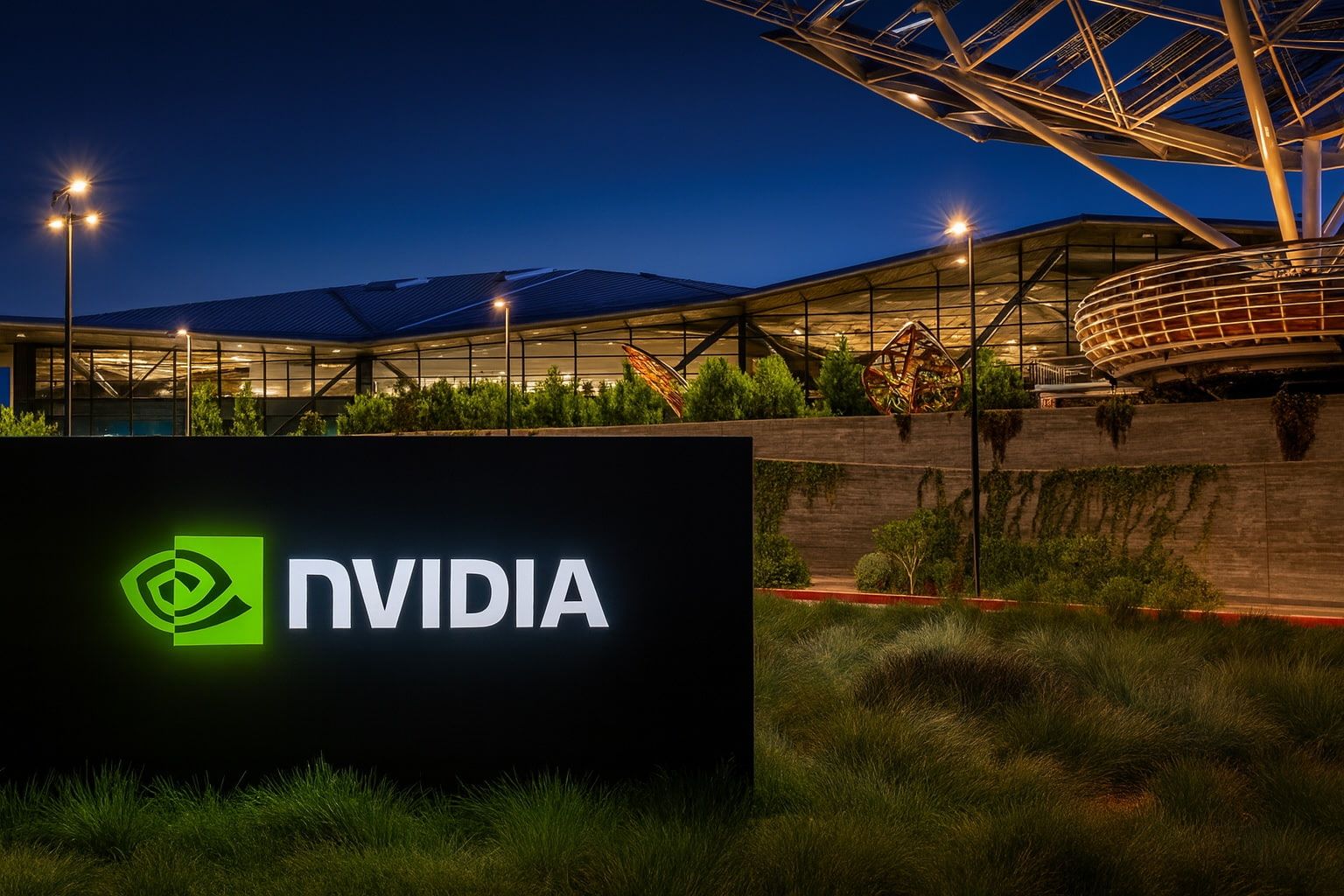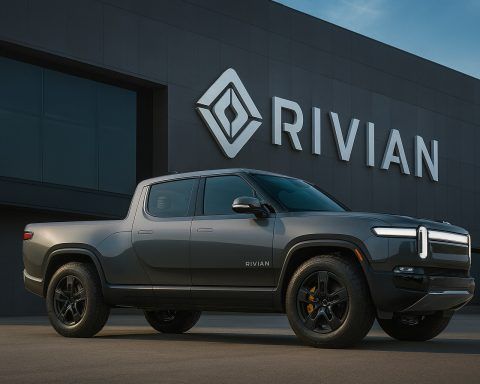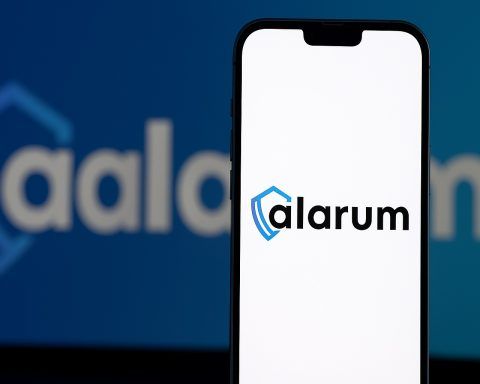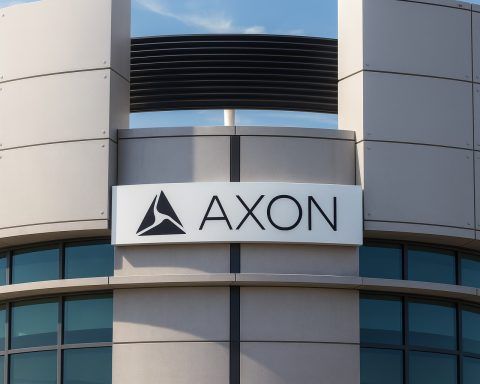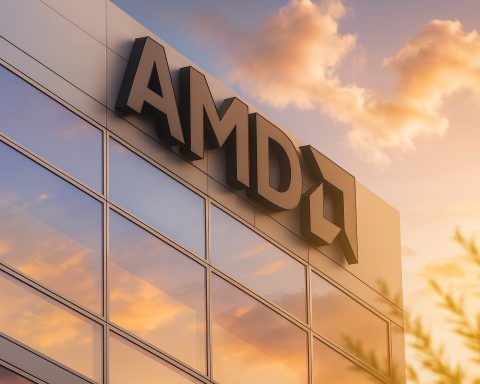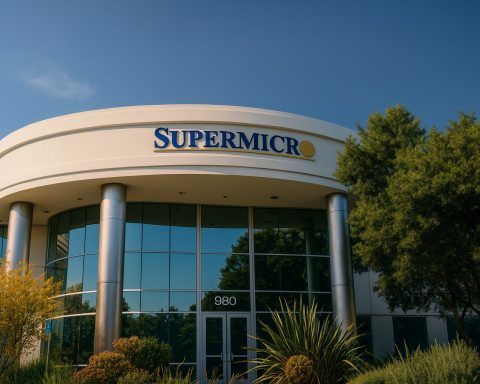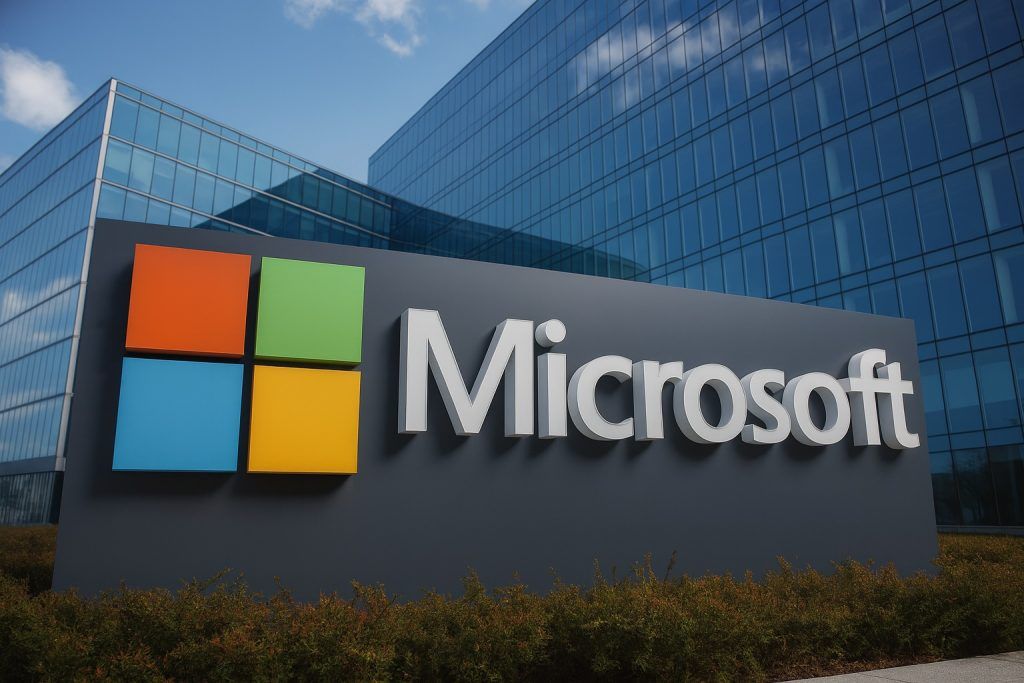- Stock Slips After Record High: Nvidia (NVDA) shares trade around $202 on Nov. 4, down roughly $5 (-2.5%) from yesterday’s close [1] after recently touching all-time highs.
- World’s First $5T Company: A frantic AI rally briefly vaulted Nvidia’s market capitalization above $5 trillion last week – larger than the GDP of Japan or the UK [2]. Its stock is up ~40–50% in 2025 amid insatiable demand for AI chips.
- AI Chip Wars Intensify: Rival AMD stock just surged ~25% on news of a multibillion-dollar OpenAI partnership, signaling rising competition. OpenAI will use AMD’s MI300 GPUs (6 gigawatts worth) and even take a 10% equity stake in AMD [3], prompting concerns Nvidia’s dominance may be challenged [4].
- U.S.–China Tensions Loom: Geopolitics cast a shadow. Washington’s export bans have curbed Nvidia’s sales of advanced chips to China, and Beijing retaliated by ordering tech firms to stop buying Nvidia chips [5]. Nvidia’s CEO Jensen Huang admits he’s “disappointed” but notes the U.S. and China “have larger agendas to work out” – essentially that Nvidia is a pawn in a “digital Cold War,” as one analyst put it [6] [7].
- Earnings Smashing Records: Nvidia’s latest earnings (Aug 2025) were staggering. Quarterly revenue hit $46.7 billion (up 56% YoY) with $26 billion in profit, shattering estimates [8] [9]. CEO Huang touted the new “Blackwell” AI chips as “the platform the world has been waiting for” amid “extraordinary” demand [10]. Nvidia is even returning cash to shareholders with massive buybacks.
- Bullish Outlook… with Caveats: Wall Street remains overwhelmingly bullish – 46 out of 49 analysts rate NVDA a buy, with an average 12-month target of ~$234 [11]. Some bulls argue the stock could soar another ~45% to around $275 as AI spending grows [12]. However, a few voices urge caution: Goldman Sachs flagged possible “circular” sales where Nvidia’s huge investments in startups (like a $100 billion stake in OpenAI) come back as orders for its GPUs [13] [14]. If part of Nvidia’s growth is essentially self-funded, its “sky-high” 50× earnings valuation may be hard to sustain.
In-Depth Analysis:
AI Boom Propels Nvidia to Record Heights
Nvidia’s stock has been on an absolute tear, driven by the global gold rush for artificial intelligence infrastructure. Shares hit a record $207.86 on October 29, briefly making Nvidia the first company ever valued over $5 trillion [15]. To put that in perspective, three months ago Nvidia crossed $4T – the growth has been meteoric. This rally reflects feverish demand for Nvidia’s cutting-edge AI chips (like the H100 and new Blackwell GPUs) that power everything from ChatGPT to autonomous vehicles. As one report noted, a “ravenous appetite” for Nvidia’s AI hardware has sent its stock up over 50% in 2025, even outpacing the broader tech boom [16] [17]. Wall Street’s enthusiasm turned Nvidia into the de facto poster child of the AI revolution – in mid-2025 it was the largest of the tech “Magnificent Seven.”
However, after peaking last week, NVDA shares have pulled back slightly. By November 4, the stock hovered near $201–202, down about 2–3% from its prior close [18]. Some profit-taking isn’t surprising given the dizzying heights. Notably, the entire Nasdaq has faced volatility amid shifting market sentiment. Still, even after this dip, Nvidia’s stock is up dramatically year-to-date and trading at valuation multiples that imply huge future growth. The question on everyone’s mind: can the company live up to the hype, or is the AI trade reaching bubble territory?
One factor behind the recent rally is investors cheering Nvidia’s deal momentum. CEO Jensen Huang has been on a “spree of deals” to cement Nvidia’s chips at the center of AI build-outs [19]. Over the past few months, Nvidia has announced $500 billion in AI chip orders and plans to build seven supercomputers for the U.S. government [20]. It’s also struck new supply agreements with major tech players like Nokia, Samsung, and Hyundai for integrating its AI silicon [21]. These blockbuster orders fuel the narrative that Nvidia’s growth runway in AI is enormous. As Huang boldly declared, “The AI race is on, and Blackwell is the platform at its center.” [22] In other words, Nvidia aims to be the indispensable arms dealer of the AI age.
That confidence is backed up by jaw-dropping financial results. In its latest quarter (Q2 FY2026), Nvidia smashed expectations with $46.7 billion in revenue (up 56% year-over-year) and 72% gross margins [23] [24]. To put that in context, just a year prior quarterly revenue was ~$30B [25] – the growth is unprecedented for a company of this size. Data center chip sales (mostly AI GPUs) nearly doubled from a year ago to $41 billion [26], comprising the bulk of revenue. Net income soared to $26.4 billion in one quarter [27] – exceeding what many Fortune 500 companies earn in a year. Nvidia has effectively become a money-printing machine on the back of AI. No wonder its stock nearly tripled between early 2023 and late 2025.
Yet even Nvidia’s own CFO might admit these growth rates can’t last forever. The company gave robust guidance, but investors have largely priced in perfection. Nvidia now trades around 50× earnings, a multiple that assumes the AI boom will drive high growth for years to come [28]. Any stumble – whether a tech innovation, a competitor leapfrogging, or simply a macro slowdown – could jolt the stock. As we explore below, rising competitive threats and geopolitical risks mean Nvidia’s path to sustaining its trillion-dollar valuation is not without hurdles.
Rivals Strike Back: AMD, Intel, and the AI Chip Race
Nvidia’s dominance in AI chips has been near-absolute – it reportedly commands 80%+ market share in AI model training and about 92% of the overall GPU market [29]. Its proprietary CUDA software ecosystem has further locked in customers to Nvidia’s hardware [30]. But success breeds competition. In the last week, the competitive landscape dramatically intensified with a headline-grabbing deal between Advanced Micro Devices (AMD) and OpenAI, the very poster-child AI startup that helped spark Nvidia’s rally.
Over the weekend, OpenAI announced a strategic partnership with AMD to diversify its chip suppliers. The deal is a stunner: OpenAI will deploy up to 6 gigawatts of AMD’s Instinct MI300 GPUs in its data centers, starting with 1 GW in late 2026 [31]. To put that in perspective, 6 GW is an enormous amount of compute (roughly equivalent to many tens of thousands of high-end GPUs). In return, OpenAI negotiated the right to buy a 10% equity stake in AMD via warrants tied to performance milestones [32]. The structure essentially rewards OpenAI for helping make AMD successful. Analysts estimate the partnership could be worth “billions” of dollars to AMD [33].
For AMD, long seen as running far behind Nvidia in AI accelerators, this is a breakthrough victory. It validates AMD’s GPU technology as a viable alternative for cutting-edge AI workloads. AMD’s CEO Lisa Su has aggressively invested in AI chips (the MI300X was recently shown to outperform Nvidia’s last-gen H100 on certain benchmarks) and this deal suggests those efforts are paying off [34]. The market reaction said it all: AMD’s stock exploded ~25% higher on the news, reaching all-time highs [35]. Suddenly, investors see AMD as a credible “second source” for AI silicon in a world where demand far exceeds what Nvidia alone can supply.
Meanwhile, Nvidia’s stock dipped about 1% on the AMD/OpenAI announcement [36]. That modest slide reflects concern that Nvidia’s once-exclusive hold on customers like OpenAI is eroding. Just two weeks earlier, Nvidia had inked its own massive $100 billion supply-and-investment deal with OpenAI [37] – effectively buying a big stake in OpenAI and agreeing to furnish it with GPUs (reportedly 10 GW of capacity, including millions of Nvidia chips [38]). Now OpenAI is bringing AMD (and possibly others) into the fold to avoid over-reliance on any single vendor. For Nvidia, it’s a sign that even its best customers are hedging their bets. As one analyst noted, “when your two largest customers (Microsoft and Amazon – 39% of Nvidia’s revenue) are developing their own chips or backing new suppliers, you face a structural reset.” [39] Competition is no longer theoretical; it’s here.
Beyond AMD, other challengers are rising. Broadcom, better known for networking chips, stunned the industry by disclosing a mysterious $10 billion order (widely believed to be from OpenAI) for its forthcoming custom AI accelerators (XPUs) [40]. Citi analyst Atif Malik even cut his Nvidia price target slightly, citing Broadcom’s entrance as a sign that custom silicon could “chip away” at Nvidia’s dominance in 2026 [41] [42]. Malik projects that these new AI chips (from Broadcom and possibly others) might grow +53% next year, while Nvidia’s AI-GPU growth “slows” to +34% – still huge, but a step down [43]. In Malik’s view, Nvidia’s moat will inevitably narrow as big cloud players seek tailored chips. Indeed, Amazon and Google are already designing their own AI processors (AWS’s Trainium chips and Google’s TPUs) to reduce their dependence on Nvidia [44] [45]. Meta has similar efforts. The message: even trillion-dollar tech giants don’t want to be beholden to Nvidia’s pricing power.
And we can’t forget Intel, the historic arch-rival in semiconductors. Intel has lagged in the GPU/AI race, but it’s scrambling to catch up. The company’s Habana Gaudi AI accelerators (from an acquisition) are being positioned as an alternative for cloud inferencing, and Intel has hinted at new GPU architectures in the pipeline. Intel also invested in AI startups like SambaNova to bolster its portfolio [46]. So far, Intel hasn’t made a major dent in Nvidia’s market share, but as the only other U.S. firm with massive chip fabrication and design resources, it remains a long-term competitor – especially if Nvidia stumbles or if customers seek diversification for strategic reasons.
Even internationally, Nvidia faces fresh rivalry. In China, where Nvidia’s top-end AI chips are now barred, domestic champions are racing to fill the gap. Huawei, for instance, is reportedly prepping a new Ascend 950 AI chip for early 2026 that aims to “rival Nvidia” in performance [47]. Huawei’s recent prototype AI chips have shown promise, and Beijing’s push for self-sufficiency means ample funding for such projects. Though Chinese chips still trail Nvidia’s in cutting-edge capabilities (in part due to U.S. export restrictions on the best manufacturing tools), they could capture significant share in the huge Chinese AI market that Nvidia can’t fully access.
In short, Nvidia’s competitive moat – while still enormous – is finally being challenged on multiple fronts. The company’s foothold in GPUs came from a multi-year head start and a virtuous cycle (more software built for Nvidia GPUs → more developers locked in → more sales). Now the virtuous cycle is extending to others: AMD’s GPU ecosystem will grow thanks to OpenAI; cloud providers’ in-house silicon will improve through real-world use; startups like Graphcore, Cerebras, and others continue innovating on the fringes. Nvidia still has critical advantages – its chips are widely seen as the gold standard, and CUDA software lock-in is real – but customers now have credible Plan B’s. Huang isn’t sitting still; Nvidia is pouring billions into R&D (and lobbying, which it boosted to $1.9M in H1 2025 [48]) to stay ahead. The next 12–18 months will reveal whether Nvidia can maintain its “irreplaceable” aura, or if it transitions into simply a “leading chip company with normalizing margins.” [49]
Macroeconomic & Geopolitical Undercurrents
While company-specific factors drive much of Nvidia’s story, broader macroeconomic and geopolitical forces also play a huge role in its fortunes. In fact, Nvidia sits at the crossroads of two intense currents: the global AI investment frenzy, and the U.S.–China great-power tech rivalry.
On the macro front, the backdrop of 2025 has been mixed for high-flying tech stocks. Early in the year, rising interest rates and inflation worries cooled some of the speculative heat in equities. High-growth stocks like Nvidia, which trade on lofty future earnings, are sensitive to interest rate expectations. However, by the fall of 2025, central banks began to shift toward easing. The Federal Reserve made at least one 25 bps rate cut (after having aggressively hiked rates in 2022–2024), and other central banks like the Bank of Canada have also cut rates (BoC is down to 2.25% policy rate) [50]. This pivot to a more dovish stance injected fresh optimism into the stock market. Lower interest rates tend to boost risk appetite and increase the present value of companies’ future profits – a tailwind for tech giants like Nvidia. Indeed, U.S. indices hit record highs in late October as investors anticipated the end of the tightening cycle [51].
That said, recession fears and volatile economic data still lurk in the background. If global growth were to slow sharply (for example, due to high oil prices or geopolitical shocks), it could dampen corporate spending on AI projects, which in turn would hit Nvidia’s order book. So far, though, the resilience of the U.S. economy (and heavy spending by cash-rich cloud firms) has kept the AI investment boom going strong. Even manufacturing slowdowns in places like China [52] have not yet derailed the broader trend of ballooning AI budgets.
The far thornier issue for Nvidia is geopolitics – especially U.S.–China relations. As a maker of strategically critical technology, Nvidia is deeply entangled in the tech “cold war” between Washington and Beijing. The company’s most advanced AI chips (like the H100 and Blackwell Ultra) are considered dual-use technologies with national security implications. Over the past year, the U.S. government has tightened export controls, seeking to bar cutting-edge Nvidia GPUs from reaching Chinese hands (to prevent China from advancing its AI and military capabilities). In late 2024 and again in 2025, Washington expanded chip export bans and even prohibited Nvidia from selling certain high-performance models (like the H20 series) to China [53]. At one point, Nvidia had to take a $4.5 billion inventory charge when U.S. rules abruptly halted H20 chip shipments to China in Q1 2025 [54]. These curbs underscore how policymaking can whipsaw Nvidia’s revenue – China had been one of its largest markets for data center GPUs.
China, for its part, has not stood idle. In September 2025, reports surfaced that China’s internet regulator (CAC) ordered domestic tech giants (like ByteDance and Alibaba) to stop purchasing Nvidia chips and cancel existing orders [55]. Shortly after, China’s authorities launched a preliminary antitrust probe accusing Nvidia of anti-competitive practices in GPUs [56]. While some of this may be posturing, it highlights Beijing’s leverage: they can discourage Chinese firms from relying on Nvidia, accelerating the pivot to local alternatives (e.g. Huawei’s Ascend chips). As an industry analyst quipped, “Jensen Huang’s diplomatic comment about ‘larger agendas’ is CEO-speak for ‘we’re pawns in a digital Cold War.’” [57] Indeed, Huang has been trying to navigate this minefield carefully. Publicly, he expressed patience and hope that U.S. and China leaders will reconcile their differences so that Nvidia can serve the Chinese market [58]. But the reality is, both superpowers are doubling down on tech self-sufficiency, and Nvidia is caught in the middle. The company even became a talking point at the highest levels – President Donald Trump (back in office in 2025) has alternated between hardline and dealmaking approaches. In one unusual August 2025 deal, Trump granted Nvidia special licenses to sell certain chips to China (the H20) in exchange for the U.S. government taking a 15% cut of those sales [59]. Yet weeks later, he suggested he might allow Nvidia’s latest “Blackwell” AI chip to be sold to China as part of a broader trade negotiation [60] [61]. This on-again, off-again policy creates enormous uncertainty for Nvidia and its customers.
The export restrictions have a silver lining for Nvidia, ironically: whatever Nvidia cannot sell to China often gets snapped up by other regions (U.S. or Europe), since global supply is limited. In the short term, being “forced” to deny China top-tier chips has not hurt Nvidia’s financial performance; if anything, scarcity has kept prices (and margins) sky-high [62]. But longer term, losing access to China’s market – or facing Chinese boycotts – could stifle a huge source of growth. It also incentivizes Chinese buyers to seek black-market channels or accelerate homegrown solutions, eroding Nvidia’s future demand.
Geopolitics also play into investor sentiment. At times, easing tensions (say, hopes of a U.S.-China trade truce or tariff cuts) have given Nvidia’s stock a boost. For example, in late October, Trump hinted at cutting tariffs on Chinese goods (even fentanyl-related tariffs) and talking with China’s president, which coincided with Nvidia’s shares jumping intraday [63] [64]. Conversely, escalating tensions – like talks of broader tech sanctions or Chinese military drills – can spook tech investors. Ongoing global conflicts (e.g. in the Middle East or Ukraine) can also indirectly affect Nvidia. They influence energy prices, investor risk aversion, and defense-related tech spending (Nvidia does have exposure to defense AI projects). Additionally, export bans on Nvidia’s chips are now a tool of foreign policy; for instance, the U.S. recently barred exports of certain Nvidia chips to “some Middle East countries” on national security grounds [65].
In summary, Nvidia’s trajectory is not just about chips and earnings – it’s tied to macro cycles and geopolitical chess matches. The company’s stunning growth is unfolding during a unique window where interest rates, government policies, and global AI arms-race dynamics are all favorable. Should any of those pillars waver – e.g. a sharp economic downturn cutting AI budgets, or a political decision that significantly locks Nvidia out of major markets – the impact on Nvidia’s valuation would be significant. Brookings Institution analysts cautioned that if AI productivity gains prove “limited or delayed,” a “sharp correction in tech stocks…with negative knock-ons for the real economy” becomes “very likely.” [66] That’s a polite way of saying the AI bubble could pop. Nvidia, straddling the center of AI, would be most exposed in such a scenario.
Financial Fortitude and Recent Earnings
Even with all the external risks, one cannot ignore just how fundamentally strong Nvidia’s business has become. The latest earnings report (for the quarter ended July 27, 2025) was nothing short of historic. Nvidia delivered record revenue of $46.7 billion in the quarter [67] – a figure that would have been unfathomable for a chip company a few years ago. For perspective, that’s over half of Intel’s entire annual revenue, achieved by Nvidia in just three months. Year-over-year, sales were up 56%, and sequentially up 6% even after a prior blowout quarter [68]. The vast majority came from data center AI chips, which jumped 56% YoY to $41.1B [69], confirming that demand from cloud giants and enterprises for Nvidia’s AI hardware is still scaling exponentially.
Profitability was equally astounding. Gross margins topped 72% [70], meaning for every $1 in sales Nvidia kept over $0.72 before other expenses – an indicator of extraordinary pricing power. (By contrast, a typical semiconductor company might have gross margins in the 40–60% range.) After operating costs, Nvidia’s net income hit $26.4 billion, up 59% from a year ago [71]. The company generated so much cash that it aggressively bought back shares – returning $24.3 billion to shareholders in the first half of 2025 [72]. In fact, Nvidia’s board just authorized an additional $60 billion for stock repurchases [73], one of the largest buyback plans on record. This signals management’s confidence in the business and provides ongoing support to the stock price.
Digging into the earnings details, a few highlights stand out:
- No China sales? No problem. Nvidia disclosed that it had zero sales of its H20 AI chips to China-based customers in the quarter (due to export rules), yet it still smashed records [74]. Impressively, Nvidia managed to sell $650 million worth of H20 chips to other international customers, offsetting the China shortfall, and even released $180M of inventory reserves [75]. This shows the breadth of global demand – if China can’t buy, someone else will eagerly fill the gap.
- New Products ramping: The quarter saw a strong ramp of Nvidia’s next-gen Blackwell GPU. Blackwell-related data center revenue rose 17% sequentially [76], indicating that customers are swiftly adopting Nvidia’s newest, most powerful chips (despite their hefty price tag reported around $40,000+ each [77]). Nvidia is effectively iterating its product leadership faster than competitors can catch up.
- Gaming and other segments: Historically, Nvidia’s biggest business was gaming GPUs. That segment is now secondary to AI, but still important. Gaming revenue was around $4.3B in the quarter [78] – solid, though not the focus for investors at the moment. Nvidia’s automotive and professional visualization segments also grew modestly, but together they’re a rounding error compared to data center.
- Guidance: While Nvidia didn’t explicitly break out guidance numbers in the press release excerpt, analysts noted that the company’s outlook was upbeat. Many expected Nvidia to “beat and raise” forecasts yet again [79]. The company likely guided Q3 (Aug–Oct) revenues to another sequential increase, keeping analysts in a perpetual state of upward revision for their models.
It’s worth mentioning that Nvidia’s results obliterated even the loftiest Wall Street forecasts, but interestingly the stock reaction right after earnings was somewhat muted. In late August when these numbers came out, Nvidia’s stock initially jumped, then actually fell back a bit despite the beat [80]. This suggests a “sell-the-news” dynamic – expectations were so high that only a colossal beat would move the needle (and Nvidia delivered one, yet profit-takers still cashed out). It underscores how much optimism was already baked into NVDA’s $1+ trillion valuation by that point.
From a financial health perspective, Nvidia is in an enviable position. It has a war chest of cash, robust free cash flow, and relatively little debt. That means it can continue to invest heavily in R&D, make strategic acquisitions, and weather any cyclical downturn better than most. For instance, Nvidia acquired Mellanox in 2020 (networking) and ARM is still a potential mega-acquisition on the horizon if geopolitics ever allow it. With its strong balance sheet, Nvidia can outspend and outlast smaller rivals in the AI race.
In summary, Nvidia’s recent earnings confirm it is firing on all cylinders operationally. The company is currently printing profits at a rate unprecedented in the chip industry. As long as the AI demand trend stays on track, Nvidia’s financial momentum provides a cushion against short-term challenges. However, investors must weigh that against the stock’s premium valuation and the potential for growth rates to moderate. Nvidia’s CFO Colette Kress has hinted that while demand is immense, supply constraints and geopolitical factors inject uncertainty quarter to quarter [81]. For now, though, the financial results give Nvidia significant credibility – it’s not just a hype stock; it’s delivering real earnings power to back it up.
Forward-Looking: Is Nvidia’s Sky the Limit?
Looking ahead, the debate among experts boils down to whether Nvidia can continue its stratospheric growth or if gravity (competition, saturation, or economic reality) will eventually bring it back to earth. Forecasts for Nvidia’s future run the gamut from exuberantly bullish to cautiously skeptical. Here’s a look at the spectrum of viewpoints:
Most analysts remain bullish. The consensus 12-month price target on Wall Street is around $233 – roughly 16% above the current price [82]. Out of nearly 50 analysts covering NVDA, 46 have “Buy” ratings [83]. That kind of near-unanimity is rare. Firms like Goldman Sachs recently reiterated their positive stance, noting Nvidia’s central role in the AI ecosystem. Goldman’s analyst James Schneider even raised his target from $200 to $210 in October [84] after Nvidia’s strategic investments (like in OpenAI), arguing that those partnerships will “continue driving substantial demand” for Nvidia’s chips [85]. Many see Nvidia’s growth runway extending for years: the TAM (total addressable market) for AI hardware is expanding as more industries adopt AI, and Nvidia is poised to capture a huge chunk of the multi-trillion-dollar opportunity. CEO Jensen Huang himself predicted that AI infrastructure spending could hit $4 trillion by 2030 [86], implying massive annual demand for chips. Some high-profile tech investors go even further – for example, Beth Kindig of the I/O Fund boldly forecasts Nvidia will be a $10 trillion company by 2030 (which would more than double the stock from here) [87]. In her view, Nvidia’s dominance in AI and its expansion into software and services (like its AI cloud platforms, automotive AI, etc.) will sustain high growth well into the next decade.
There are also contrarians. Given the stock’s epic run, a few analysts and investors warn that expectations have become too euphoric. One red flag highlighted is the “circular revenue” issue raised by Goldman and others [88]. Essentially, Nvidia has been investing in AI startups (like OpenAI, Inflection, CoreWeave, etc.), who then use that funding to buy Nvidia GPUs. It’s a bit like a snake eating its tail: those sales boost Nvidia’s revenue figures now, but they’re not purely organic demand. If you strip out this effect, Nvidia’s growth might be slightly less torrid than the headline numbers suggest. Schneider at Goldman cautioned that reliance on such self-reinforcing deals “could make Nvidia’s long-term growth less certain”, since some demand is propped up by Nvidia’s own capital [89] [90]. In other words, there’s some financial engineering at play – reminiscent of how, in the dot-com boom, Cisco Systems would lend money to startups to buy Cisco gear, artificially inflating its sales [91]. When that bubble burst, Cisco’s stock collapsed by almost 80%. Nvidia is orders of magnitude stronger than Cisco was, but the analogy is food for thought.
Another concern is the sustainability of AI spending. Right now, we’re seeing extraordinary commitments – e.g. OpenAI planning over $1 trillion in infrastructure spend (across Nvidia, AMD, cloud partners) over coming years [92] [93]. But some skeptics wonder: How much of this AI investment will generate real economic returns? If companies are pouring billions into AI with little immediate ROI (recall that OpenAI itself is reportedly burning $8–10B per year and might not be profitable until much later [94] [95]), at some point investors or customers could pull back. AI fatigue or a few high-profile project failures could temper the growth exuberance. The Brookings Institution has warned that if AI’s productivity benefits don’t materialize quickly, tech valuations could face a harsh reckoning [96]. Nvidia, with a price-to-earnings far above the market average, would be vulnerable to a sentiment shift.
Furthermore, there’s the issue of valuation versus growth. Nvidia’s current market cap (around $4.8T at $202/share) implies that it will keep delivering high double-digit growth for quite a while. Any slowdown – say growth “falls” to 10–15% annually – might lead to a compression of the stock’s P/E multiple. Some analysts see this as inevitable: as competition increases and supply catches up, Nvidia’s margins could normalize from ~75% to maybe 60% or lower, and its earnings multiple could shrink to more like 25–30× (still high, but half the current) [97]. If that happened without a commensurate surge in earnings, the stock price would decline. This is essentially the bear case: Nvidia transitions from a one-of-a-kind growth marvel to just a very successful chip company, and the stock reprices accordingly. In a bear scenario, some have speculated Nvidia could be worth significantly less – for instance, 24/7 Wall St. modeled a bear case of $38/share by 2030 (versus $491 bull case) [98], though that seems extreme. More moderately, Morningstar’s models suggest Nvidia’s fair value is much lower than market price, as they assume growth will moderate and competition will bite.
To capture the range of forecasts: on one end, you have predictions of another +100% gain in a few years (for Nvidia to hit $10T company) [99], predicated on AI transforming the economy and Nvidia capturing a lion’s share. On the other end, you have warnings of a potential 50%+ collapse if the AI boom goes bust or Nvidia stumbles. The middle ground, and probably more likely outcome, is that Nvidia continues growing but at a decelerating pace. It may not dominate every corner of AI (some workloads might go to custom silicon; some customers will multi-source), but it can still expand its revenues in data center, automotive (self-driving AI), and new areas like AI software subscriptions.
Importantly, Nvidia itself is not complacent. The company is moving up the stack – offering AI as-a-service via cloud partners, developing its own AI models and software frameworks, and creating enterprise solutions (e.g. Nvidia AI Enterprise) that could add recurring revenue streams. If successful, these efforts mean Nvidia isn’t just a chipmaker, but an end-to-end AI platform provider. That could justify a higher valuation. On the flip side, entering software services pits Nvidia against new competitors (like cloud providers who may not want to cede that territory).
For investors, the key will be monitoring a few critical signposts in the coming months: Nvidia’s next earnings (Nov 19, 2025) to see if the growth streak continues and what guidance is given for 2026; any further U.S.–China policy changes around chip exports after high-level meetings (or if China’s rumored bans gain teeth); the traction of AMD’s MI300X in real-world deployments (does it meaningfully eat into Nvidia’s orders?); and the progress of alternative AI chips (like AWS Trainium, Google TPU, Broadcom XPU) in major AI training projects. Early signals that customers are finding success beyond Nvidia would be a notable shift.
In conclusion, Nvidia stands at the pinnacle of the AI era it helped create. Its stock has delivered eye-popping returns and earned a valuation that assumes it will remain the unrivaled leader in AI computing. The company’s execution so far justifies a lot of that optimism – “dominating” barely begins to describe Nvidia’s position today. But history reminds us that no dominance lasts forever in technology. Competitors are now nipping at Nvidia’s heels, and macro/geopolitical crosswinds could strengthen at any time. For now, Nvidia’s narrative is one of remarkable growth and opportunity, tempered by the first hints of saturation and pushback. Whether it continues to defy gravity is the big question for 2026 and beyond. As one market observer summed up the situation for Nvidia’s investors: “The signs are clear. The company will remain dominant and profitable, but it’s transforming from an ‘irreplaceable monopoly’ to a ‘leading semiconductor company with normalizing margins.’” [100] If and when that perception shifts, investors will need to decide what premium that new reality deserves.
Sources:
- Reuters – “Nvidia CEO Huang caught between US, China’s ‘larger agendas’” (Sept 17, 2025) [101] [102]
- Reuters – Nvidia shares reaction to China’s chip purchase ban, Jensen Huang quotes [103] [104]
- The Guardian – “Nvidia becomes world’s first $5tn company amid stock market and AI boom” (Oct 29, 2025) [105] [106]
- The Guardian – Live market blog (Oct 29, 2025), Trump remarks and Nvidia share jump [107] [108]
- Yahoo Finance/MarketBeat – Nvidia stock price and analyst targets (Nov 4, 2025) [109] [110]
- Nasdaq data – Nvidia historical stock prices late Oct/early Nov 2025 [111] [112]
- FXEmpire – “AMD Soars 25% on OpenAI Deal, Nvidia Slips as Tech Stocks Diverge” (Nov 3, 2025) [113] [114]
- FXEmpire – Details of AMD–OpenAI partnership (GPU deployment, equity stake) [115]
- Investing.com analysis – “Amazon/OpenAI deal ignites AI battle as Nvidia retreats” (Nov 3, 2025) [116] [117]
- Finviz/Motley Fool – Analyst Atif Malik’s view, Broadcom competition (Sep 2025) [118] [119]
- Motley Fool via Finviz – Nvidia’s market share and export control impacts [120] [121]
- NVIDIA Press Release – “Financial Results for Q2 FY2026” (Aug 27, 2025) [122] [123]
- Fortune/Kiplinger – Nvidia earnings summary (Aug 2025) [124] [125]
- Finbold – “Goldman Sachs issues warning for Nvidia investors” (Oct 6, 2025) [126] [127]
- StockNews/MarketWatch – Bull case: Nvidia to $275 (~45% upside) (Oct 6, 2025) [128]
- Alphaspread/Benzinga – Goldman’s “circular revenue” concern & target raise [129] [130]
- Alphaspread/Proactive – Goldman remains bullish, notes OpenAI investment recycling [131]
- Finbold – Nvidia’s $100B OpenAI deal and Schneider’s analysis [132] [133]
- Brookings Institution via Investing.com – AI investment bubble risks (Oct 2025) [134]
- MacroTrends – Nvidia closing price Nov 3, 2025 (for context) [135]
References
1. www.marketbeat.com, 2. www.theguardian.com, 3. www.fxempire.com, 4. www.fxempire.com, 5. www.fxstreet.com, 6. www.reuters.com, 7. www.reuters.com, 8. nvidianews.nvidia.com, 9. nvidianews.nvidia.com, 10. nvidianews.nvidia.com, 11. www.marketbeat.com, 12. mytradex.org, 13. finbold.com, 14. finbold.com, 15. www.theguardian.com, 16. www.theguardian.com, 17. www.theguardian.com, 18. www.marketbeat.com, 19. www.theguardian.com, 20. www.theguardian.com, 21. www.theguardian.com, 22. nvidianews.nvidia.com, 23. nvidianews.nvidia.com, 24. nvidianews.nvidia.com, 25. nvidianews.nvidia.com, 26. nvidianews.nvidia.com, 27. nvidianews.nvidia.com, 28. www.investing.com, 29. www.marketbeat.com, 30. finviz.com, 31. www.fxempire.com, 32. www.fxempire.com, 33. www.fxempire.com, 34. www.fool.com, 35. www.fxempire.com, 36. www.fxempire.com, 37. www.fxempire.com, 38. finbold.com, 39. www.investing.com, 40. finviz.com, 41. finviz.com, 42. finviz.com, 43. finviz.com, 44. www.investing.com, 45. www.investing.com, 46. www.marketbeat.com, 47. www.fxstreet.com, 48. www.reuters.com, 49. www.investing.com, 50. www.theguardian.com, 51. www.theguardian.com, 52. www.fxempire.com, 53. www.marketbeat.com, 54. www.marketbeat.com, 55. www.reuters.com, 56. www.reuters.com, 57. www.reuters.com, 58. www.reuters.com, 59. www.reuters.com, 60. www.theguardian.com, 61. www.theguardian.com, 62. finviz.com, 63. www.theguardian.com, 64. www.theguardian.com, 65. finance.yahoo.com, 66. www.investing.com, 67. nvidianews.nvidia.com, 68. nvidianews.nvidia.com, 69. nvidianews.nvidia.com, 70. nvidianews.nvidia.com, 71. nvidianews.nvidia.com, 72. nvidianews.nvidia.com, 73. nvidianews.nvidia.com, 74. nvidianews.nvidia.com, 75. nvidianews.nvidia.com, 76. nvidianews.nvidia.com, 77. finviz.com, 78. carboncredits.com, 79. www.tipranks.com, 80. fortune.com, 81. www.marketbeat.com, 82. www.marketbeat.com, 83. www.marketbeat.com, 84. finbold.com, 85. finbold.com, 86. www.alphaspread.com, 87. www.alphaspread.com, 88. www.alphaspread.com, 89. finbold.com, 90. finbold.com, 91. www.investing.com, 92. www.fxempire.com, 93. www.fxempire.com, 94. www.investing.com, 95. finbold.com, 96. www.investing.com, 97. www.investing.com, 98. 247wallst.com, 99. www.alphaspread.com, 100. www.investing.com, 101. www.reuters.com, 102. www.reuters.com, 103. www.reuters.com, 104. www.reuters.com, 105. www.theguardian.com, 106. www.theguardian.com, 107. www.theguardian.com, 108. www.theguardian.com, 109. www.marketbeat.com, 110. www.marketbeat.com, 111. www.marketbeat.com, 112. www.nasdaq.com, 113. www.fxempire.com, 114. www.fxempire.com, 115. www.fxempire.com, 116. www.investing.com, 117. www.investing.com, 118. finviz.com, 119. finviz.com, 120. www.marketbeat.com, 121. www.marketbeat.com, 122. nvidianews.nvidia.com, 123. nvidianews.nvidia.com, 124. fortune.com, 125. www.investopedia.com, 126. finbold.com, 127. finbold.com, 128. mytradex.org, 129. www.alphaspread.com, 130. www.alphaspread.com, 131. www.alphaspread.com, 132. finbold.com, 133. finbold.com, 134. www.investing.com, 135. www.macrotrends.net
